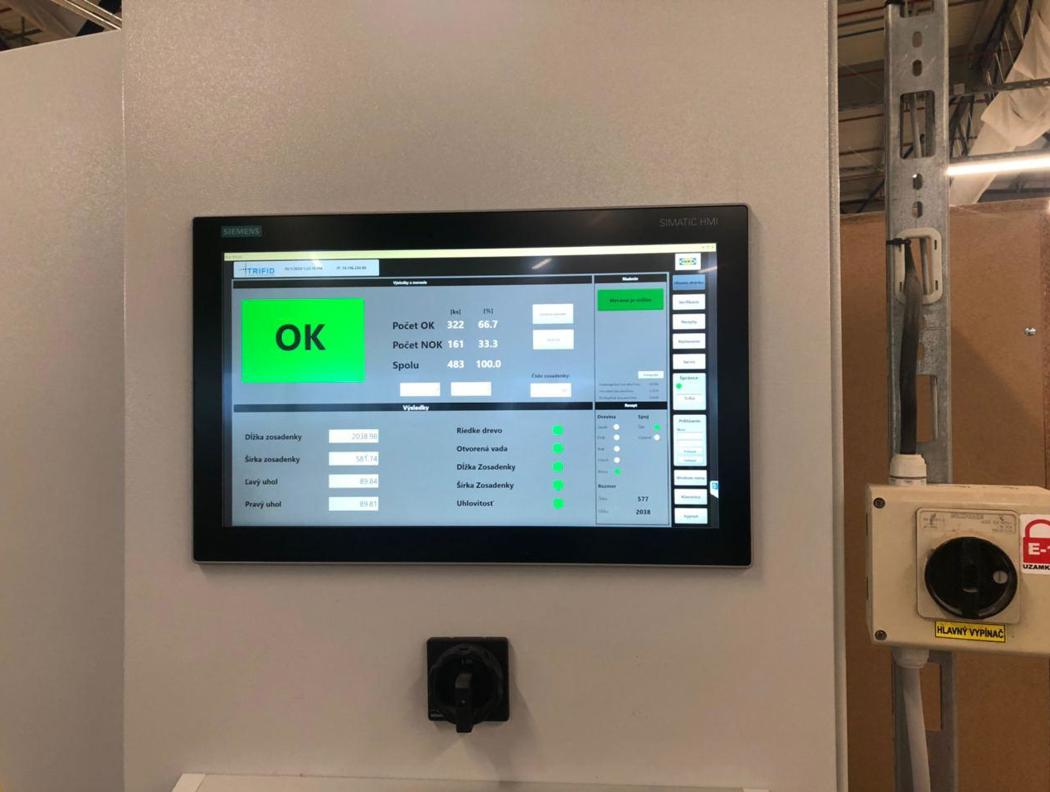Camera quality inspection system for Wood Veneer
When cutting wood, there are a number of possible defects arising during production, for example when the cutting blades become dirty, thinner or in contrast thicker zones appear on the wood, which create undesirable patterns and other disturbances.
Customer request:
- Detailed quality inspection of manufactured Wooden veneers in the production process
- Applying neural networks for complex detection
- Communication with the production line
- Sorting of produced pieces into two pallets, "OK" and "NOK"
- Comprehensive statistics of manufactured parts
- System verification before each produce shift
The emphasis on quality is in every sector of production, including the woodworking industry. This segment has also undergoing innovations and one of them is the automated detection of manufactured parts. In this industry exist a rule, "Every tree is different from each other", with this had to be applied neural network technologies to ensure reliable detection process. When cutting wood, there are a number of possible defects arising during production, for example when the cutting blades become dirty, thinner or in contrast thicker zones appear on the wood, which create undesirable patterns and other disturbances. The term "Immeasurable Defects" was coined for this type of defect to distinguish it from standard defects such as hole, crack and others.
The following defects occur:
- Holes made by insects
- Cracked wood
- Non-measurable defects
- Difference between the dimensions of the produced parts and the recipe
Challenges:
- Implementation of camera detection in the existing manufacturing process
- Cycle time of the scanning process
- A compact system consisting of the multiple cameras
- Triggering during movement of the material on the conveyor belt
- Creation of an extensive database of non-measurable defects
- Stability for different types of wood
Solution:
The result of an extensive and demanding project is the integration of a system looking for common defects with a system for extremely complex type of defects that do not meet the choice of parametric setting. Since the dimensions of the produced wood, depending on the recipe, can be up to 2500 millimetres, the system had to consist of several cameras lined up next to each other, while the photos from them were combined into one large image. One product contained a larger number of such images, depending on the recipe and the speed of the machine.
The dimensions of the product (length, width, angularity) were evaluated and compared with the selected recipe. Common defects, such as holes, cracks and others were also looked for on the wood with standard tools. It was more complex and time-consuming to create a photo database of wood to such an extent that the resulting tests complied with the standards. The time-consuming aspect lay in the necessity of learning several different types of wood, each with its unique specifications that could not be applied to other types of wood.
In the end, the camera inspection was able to sort the manufactured wood veneers onto two pallets: one for parts which went directly to the customer and another for parts that needed sorting for scrap of possible repair.
The system comprised the following components:
- Industrial Computer
- Cameras: Cognex CIC 4000
- Lighting: Custom-made SmartView
- Machine Vision Software: Cognex VisionPro, Cognex Designer, and Cognex Vidi Suite
- Communication with PLC: Ethernet/IP (PROFINET, S7 can also be used)
Outcome:
- Cost savings due to the elimination of lengthy human inspection
- Increased detection of defects, allowing for the adjustment of a smaller number of products
- Automation of the production process
- Extensive statistics of produced items








